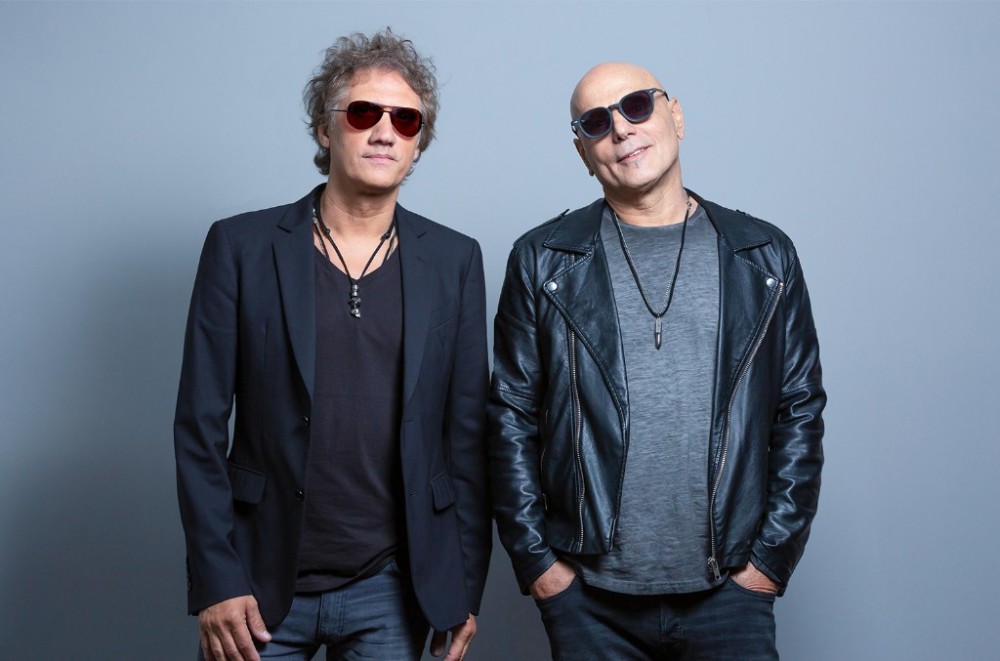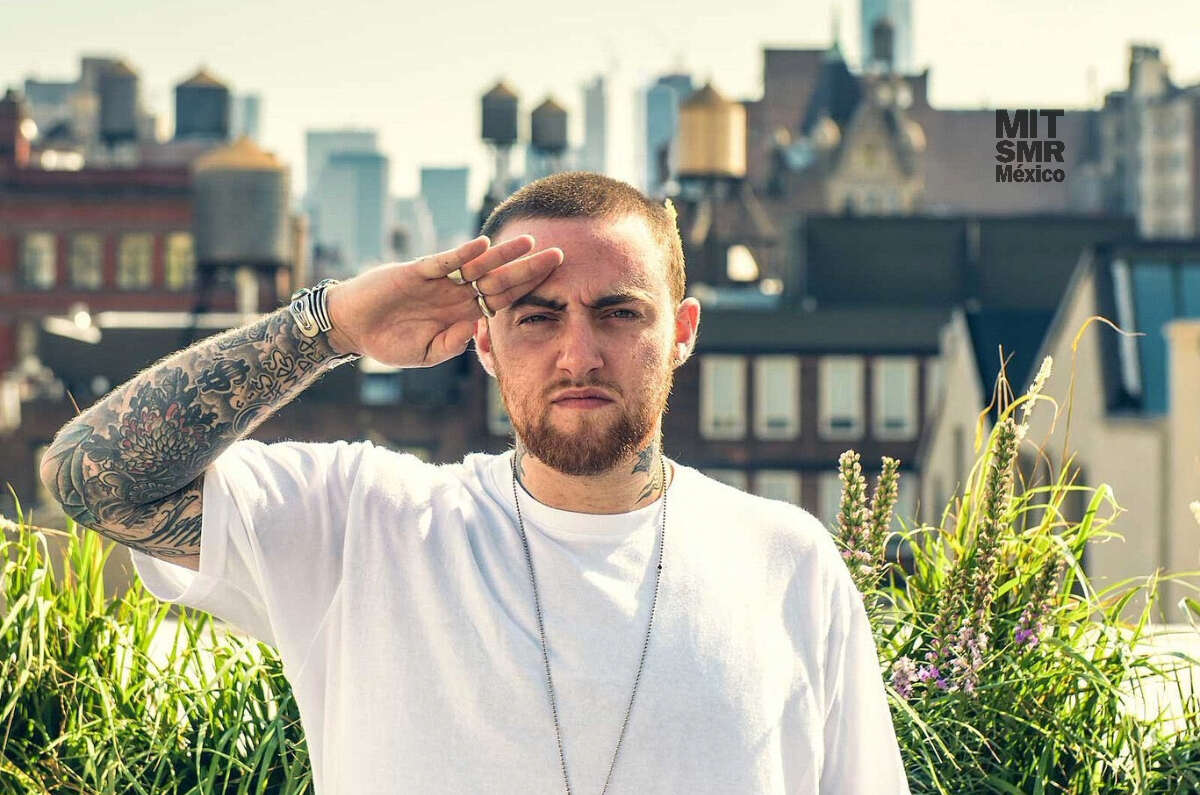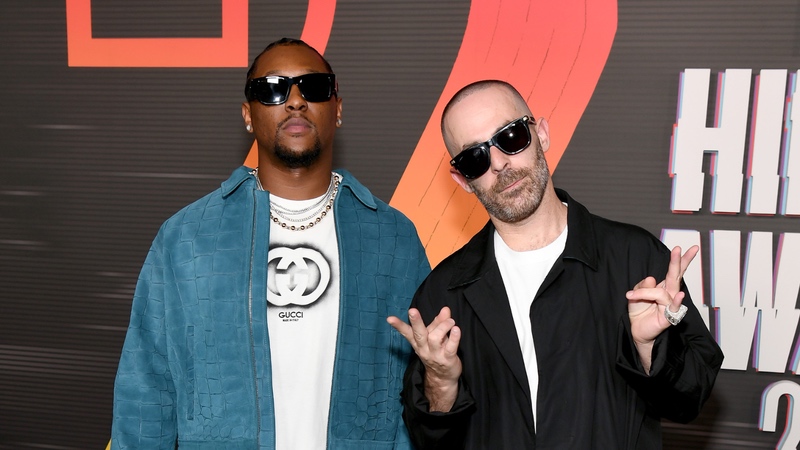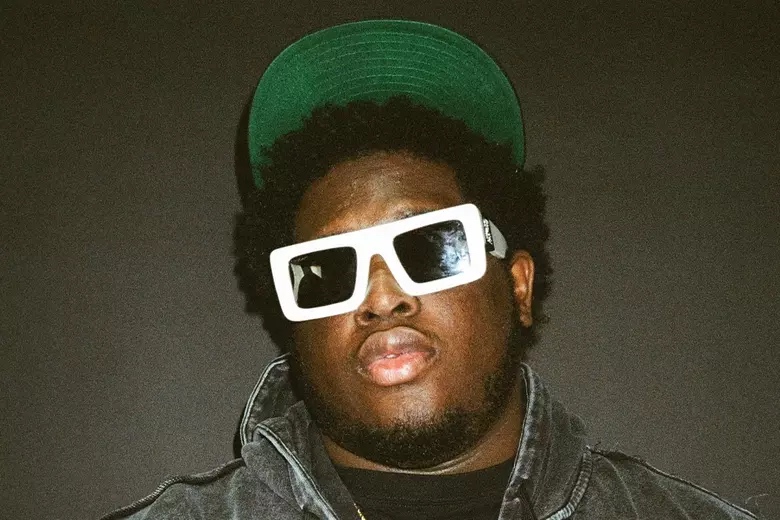How mourning gave way to celebration for the surviving members of the transcendent Argentine band: “This is our life, these are our songs, and we want to play them one more time.”
On Saturday, Soda Stereo’s Gracias Totales tour kicks off at the El Campín stadium in Bogota, Colombia. The 16 concerts in 10 countries — which Soda drummer Charly Alberti describes as shows “for being together one last time” — will be Latin America’s most repercussive rock band’s first live appearances without Gustavo Cerati, the group’s late magnetic singer, lyrical composer and guitarist, who died in 2014 at the age of 55. During the concerts, Cerati’s voice and image (onscreen) will make appearances. More than a dozen widely known artists — including Aterciopelados’ Andrea Echevarri, Café Tacvba’s Rubén Albarrán, Chilean singer Mon Laferte and Coldplay’s Chris Martin — will perform Soda Stereo songs live or video.
In separate interviews from their respective homes in Buenos Aires, Alberti and bassist Zeta Bosio spoke (in Spanish) with joy about the upcoming concerts, answering the obvious question — why? — and revealing details of what has been almost two years of preparations.
They also wanted to make some things clear about what they say has erroneously been called a “comeback” tour. “We never said this is the return of the band or that the band will keep going,” says Bosio. “This is our life, these are our songs and we want to play them one more time.”
“There’s something that’s very important for us with this tour and that’s respect,” comments Alberti. “We are doing this with respect for our story, for the public and for the absence of Gustavo. We’re not going to try and hide the fact that Gustavo isn’t here; we know Gustavo is not here. We are going to do it in a way that is more real, that has more of an impact and that is more respectful.”
Alberti is eager to put to rest speculations about who would take the place of Cerati in the trio during the concerts, a question that began buzzing on social media along with a mix of fan excitement and incredulous criticism of the idea when the tour was announced last October.
“At no time will there be just one guitarist on the stage,” explains Alberti, who stresses that the tour had been thought out in meticulous detail. “There can’t be just one singer in the show. There’s a moral reason for that. No one can replace Gustavo.”
Instead, the invited artists will join Alberti and Bosio onstage — 14 on the U.S. leg of the tour, which starts in New York on April 14, and continues in Miami, LA and Houston. They also include longtime Soda collaborator Richard Coleman, Puerto Rican rocker Draco Rosa, Argentine Oscar-winning composer Gustavo Santaolalla, Mexico’s Julieta Venegas, and Bosio’s son, guitarist Simon Bosio.
“It’s like an all-star gathering,” says Bosio. “A selection of incredible artists from all over Latin America who exemplify the internationality that the group had in the region and how beloved the band was; there are artists from different generations for whom Soda has had a special place in their life. A lot of them are friends, and others have always expressed their admiration for the band.”
“There will be no one onstage who does not have some kind of connection to Soda Stereo,” Alberti states. Martin, who sang Soda Stereo’s “De Música Ligera” with Coldplay during a concert in Buenos Aires in 2017, Cerati’s son Benito Cerati, Babasónicos frontman Adrián Dárgelos, Los Tres singer Álvaro Henríquez, León Larregui (Zoé) and Juanes are among those who will make appearances on a video screen measuring more than 4,000 square feet.
“The screen will be like a space and time machine,” says Alberti.
While the schedules of the diverse artists involved required such long-distance staging, the time element will be provided most strikingly by the voice and image of Cerati.
“It’s going to happen in some moments of the show but not all the time,” the drummer, who is 56, and has had second careers as an entrepreneur and environmental activist, explains. “It’s very moving, and it’s basically what people have dreamed of, what they have been telling us these past years, how much they’d like to see us again, to go back in time and watch us live. Well, we are going to make that happen for them.”
The idea for the tour originated after Bosio, 61 and now known to club crowds as a DJ, and Alberti went back to the studio together for a deep listen to the band’s discography. The pair had each gone on to solo projects after a reunion tour with Cerati in 2007 (the trio had broken up in 1997), but they revisited the band’s body of work for the 2017 premiere of Sep7imo Día, a Cirque du Soleil production based on Soda’s story, for which they created a soundtrack from the band’s recordings.
“It brought us together in the studio for almost a whole year,” recalls Bosio. “We were shut in working with the multi-tracks from most of our records, which we had never listened to again before. It was right after Gustavo’s death. We really went through a period of mourning in the studio.”
“It was very difficult to even listen to the songs at first,” Alberti says. “But we were working with our music over an extended period, and with the work we started to come to terms with our emotions.”
“And we came out stronger,” says Bosio. “With the desire to play those songs again. And then when we saw what happened with the Cirque] show, how the people in the audience celebrated the music that was coming from the speakers even with no live band. We said to each other that it could be fantastic to do something.”
“When all of that with Cirque was over, Zeta and I kind of looked at each other and said, che, what now?” Alberti recounts. “I said, ‘Why don’t we keep getting together in the studio once in a while and play a bit?’ A few days later, Zeta brought his bass to my studio and, through Protools, we played together with Gus. It was kind of something we did to have a good time, to feel good, just between us.”
“We listened to the tracks with Gustavo’s voice while Charly and I played live,” explains Bosio. “I think from that moment, we felt that it was a good thing.” With the encouragement of some of the people who had collaborated with Soda throughout the band’s trajectory, the idea of a tour began to take shape.
“At first we were like, ‘No, no…’ but then we thought, ‘Why not?’” recalls Alberti. “Why not do something that people who are tired of tributes by other musicians] have been asking us to do for years. Let’s do something for the fans, and for ourselves and perform as Soda for the last time.”
“This tour has to be the manifestation of the memory of what it was like when we played our songs,” says Bosio. “It’s a celebration paying homage to what we miss most — which is Gustavo.
“We didn’t want to lose time,” Bosio continues. “If we both went off to do our own things, we didn’t know when we would be able to get together again. We started there in the studio, even listening on the multi-tracks to all of the guitars that Gustavo had recorded, which weren’t the same as what he played live, since on the stage he combined everything for one guitar. Now we can re-produce what he did on the albums live with various guitarists.”
When it came time to compile the set lists, Bosio and Alberti looked at songs that had particular significance for each participating artist. They also crossed off the songs that they felt should not be performed at all.
“There were the songs that we couldn’t do without Gustavo,” Alberti explains. “Like ‘Final Caja Negra’ — that, among others, is impossible to do if Gustavo isn’t there, because it came from the pure chemistry of the three of us onstage. It can’t be repeated. So then we started looking at what each person could sing. It’s very important to that these are not versions, it’s Soda Stereo with the singers singing as Gustavo did. That was our specific request, to reproduce them in a way that Gustavo sang them. The band sounds like Soda Stereo, and the singers perform them as close to the way Gustavo did as possible, although of course it depends on who is singing them.”
The tour, called Gracias Totales for the phrase that has been tied to Cerati since he said it at the end of the band’s farewell show in 1997 in Buenos Aires, will travel to nine Latin American countries.
“We’re going back to the stadiums in places that we played in the ’80s and ’90s,” says Bosio. “It’s something incredible, like what happened with the 2007] Me Veras Volver reunion] tour.”
In the U.S., Gracias Totales will come to major venues like LA’s Forum and the Barclays Center in Brooklyn.
“Soda is a very big phenomenon,” Bosio says. “It’s like a legacy that passes from generation to generation…what allows us to see that we can do something like this now are things like Spotify, that today make it easier to understand the band’s impact]. People keep listening to Soda in their house, in their telephones and their cars, and in their hearts.”
“Our intention as a band was always to just do what we could do for ourselves and for our public,” says Alberti. “Soda was always about doing what we wanted to do and people really got what it was about. It was always about breaking molds and doing something new.”
“This is in some way another chapter for Soda and the ability to talk about Gustavo in the present is a positive thing,” says Bosio. “We’re going to go out on this tour and I feel that Gustavo is coming with us, somehow he is going to be there. And that is something miraculous.”
“This is a show for singing and being together one last time,” adds Alberti. “For me, it is clearly an end, a closure, a celebration with our audience who always followed us and gave us their love. This show is so we can all get together and say, ‘This was Soda Stereo.’”



